Swallows are small, highly aerodynamic, migratory birds built for catching insects on the wing. Sleek bodies, long pointed wings, and (usually) a forked tail make them easy to spot—yet each species has its own look, nest style, and preferred habitat. Below you’ll find 12 swallow species with field marks, distribution, and notes on behavior and nesting.
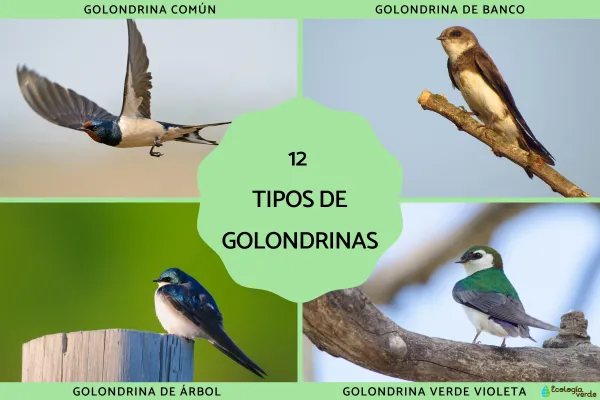
Quick note: Swallows (family Hirundinidae) are often confused with swifts (family Apodidae). Swallows perch readily on wires and branches and have broader tails; swifts have scythe-shaped wings, very short legs, and almost never land on the ground.
Shape: slim, long narrow wings; many species with a deeply forked tail (some are shallow or square-tailed).
Feeding: aerial insectivores—hunt flying insects over fields, water and roads.
Nesting: mud cups or gourd-shaped nests on cliffs/bridges/walls; burrows in sandy banks; or cavities (tree holes, nest boxes).
Range: Eurasia & Africa; European/Asian breeders winter in Africa and India. A regular species in Spain (alongside Barn Swallow).
Habitat: warm Mediterranean scrub, river gorges, cliffs, rural buildings.
ID: glossy blue-black upperparts with a rich reddish rump; buffy underparts with fine mottling; long forked tail.
Nest/feeding: often a closed, gourd-shaped mud nest; hunts flies and mosquitoes on the wing.
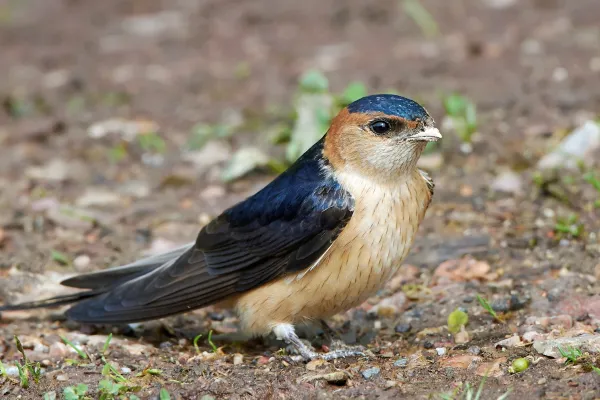
Range: widely across the Northern Hemisphere; winters across much of the Southern Hemisphere.
Habitat: meadows, farms, open water; nests on man-made structures (barns, bridges).
ID: shimmering cobalt-blue back, chestnut forehead and throat, warm buff undersides; very long deeply forked tail with white tail spots.
Nest/feeding: open mud cup; low fast flights for flying insects.
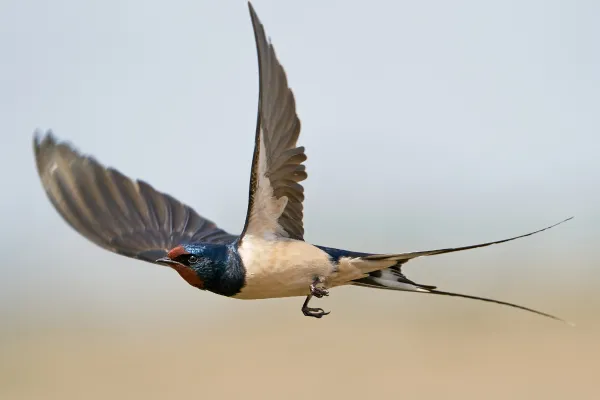
Range: Eurasia, North America, Africa; winters in South America and the Sahel.
Habitat: riverbanks, sand cliffs, gravel pits; dense colonial burrower.
ID: small (c. 12 cm); brown back, white underparts with a neat brown breast band; short, shallowly notched tail.
Nest/feeding: excavates tunnels in colonies; hawks tiny insects near water.
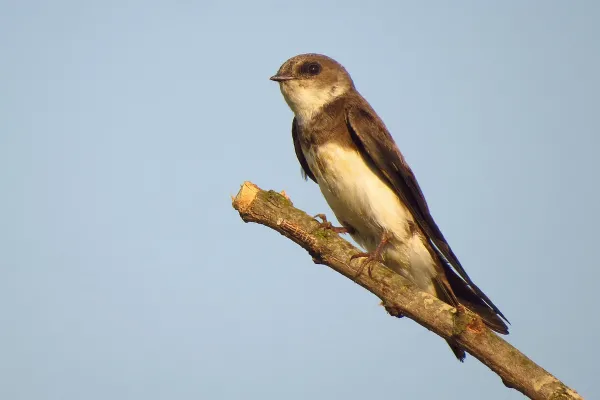
Range: S. North America, Mexico, Caribbean; some resident, some migratory.
Habitat: caves, sinkholes, bridges and buildings near open water.
ID: blue-gray back; rusty forehead and rump, pale cinnamon throat; square tail (useful to separate from deeply forked species).
Nest/feeding: colonial; mud gourd nests on walls; forages in groups.
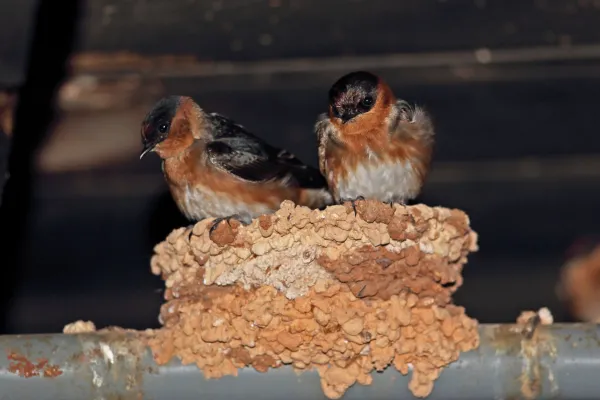
Range: North American breeder; winters in Mexico, Central America and the Caribbean.
Habitat: open fields, wetlands, lakeshores; natural cavities and nest boxes.
ID: iridescent blue-green back with white underparts; shallowly forked tail.
Nest/feeding: cavity nester; aerial insects with occasional fruit.
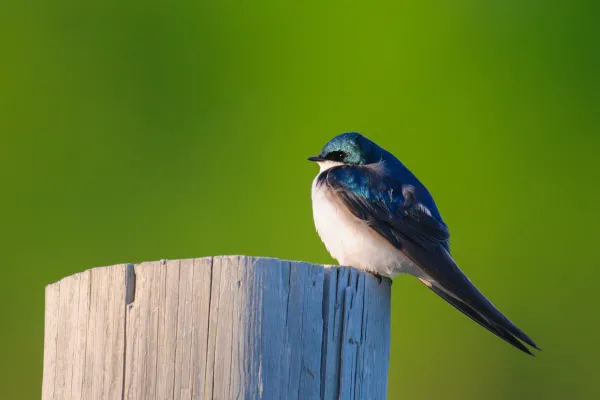
Range: W. North America, Canada, Alaska to Mexico; winters in Central America.
Habitat: prairies, rivers, lakes, open woodland with cavities.
ID: c. 13 cm; metallic green back, violet rump, white underparts; forked tail; white wraps around sides of rump and cheek.
Diet: beetles, ants, wasps, moths taken in flight; cavity nester.

Range: breeds from Alaska/Canada to Mexico; winters in South America.
Habitat: open country, cliff faces, bridges, lakes and marshes.
ID: pale whitish forehead, glossy blue-black back, rufous throat, cinnamon rump, white belly; tail relatively short.
Nest/feeding: huge colonies of gourd-shaped mud nests; forages in swirling flocks.
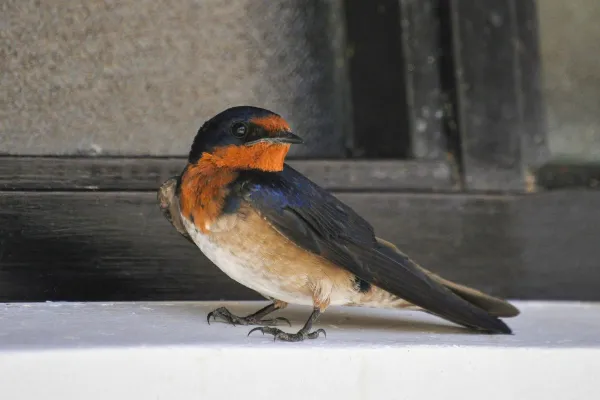
Range: North American breeder; winters to Mexico, Central America, Caribbean.
Habitat: woodlands, wetlands, rivers, bluffs.
ID: brown above, white below, dusky throat, shallowly notched tail; males have tiny rough “serrated” outer wing feathers.
Nest/feeding: cavities/crevices; low sweeping flights over water.
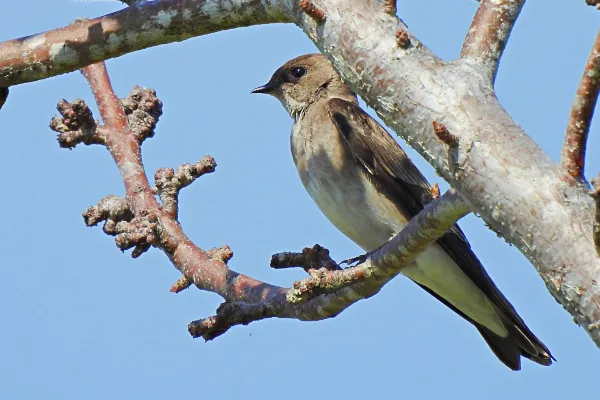
Range: NW Peru (from La Libertad) and SW Ecuador (Loja), mainly coastal.
Habitat: open areas near water.
ID: c. 13.5 cm; glossy blue-green back, white rump, white underparts with fine dark streaking; square tail.
Nest/feeding: low-level aerial forager; cavities/structures.
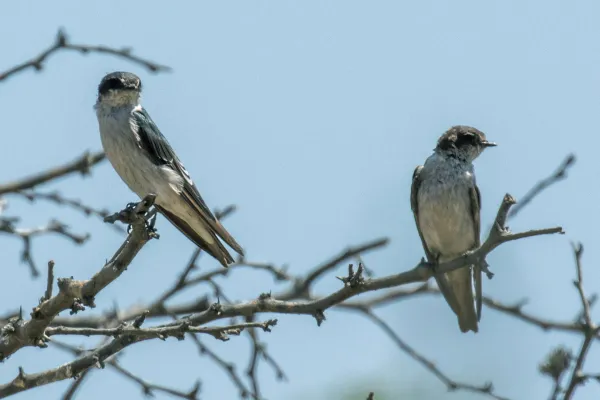
Range: Andes of S Peru, W Bolivia, N Chile, NW Argentina; 2,500–4,600 m.
Habitat: quebradas, ravines and puna grasslands along streams and slopes.
ID: c. 14 cm; dark blue back, gray rump, whitish underparts; strong, steady flight in mountain winds.
Nest/feeding: rock crevices/banks; aerial insectivore over open ground.

Range: Andes of Colombia, Ecuador, Peru, Bolivia; 2,200–4,300 m.
Habitat: dwarf forests, kewiña scrub, puna grasslands, farmland and small Andean towns.
ID: c. 13.5 cm; blue back, whitish throat, gray-brown belly, forked tail; often zigzags low among trees and shrubs.
Nest/feeding: rocks/crevices; low aerial feeding near vegetation.
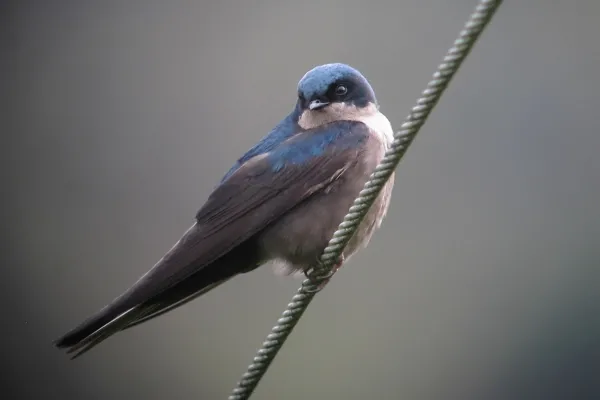
Range: SE Peru, Bolivia through Brazil, Uruguay and N Argentina.
Habitat: grasslands, savannas, wetlands and other open lowlands.
ID: c. 12 cm; gray-brown back, tawny (lion-colored) head and chest, white underparts; almost square tail.
Nest/feeding: forages over fields and marshes; crevices and structures.

Migration: Many species breed in the Northern Hemisphere and winter farther south, relying on rich insect “air plankton” and safe stopovers.
Nesting styles: Mud cups (Barn Swallow), mud gourds (Cliff/Cave Swallow, Red-rumped), sand burrows (Bank Swallow), and cavities/nest boxes (Tree/Violet-green Swallow).
Feeding young: Parents deliver boluses of insects; fledglings may follow adults to learn foraging routes.
Insect declines (pesticides, habitat loss) reduce food supply;
Modern buildings lack rough ledges and mud access—fewer nest sites;
Window collisions and nest removal cause local losses.
Be swallow-friendly: keep or add nest ledges/boxes where permitted, provide clean mud during nest building, reduce broad-spectrum pesticides, and observe respectfully (especially near active nests).
Swallow vs. swift—what’s the easiest difference?
Swallows perch on wires/branches and show forked tails; swifts have scythe-like wings, tiny feet, and almost never perch visibly.
Red-rumped vs. Barn Swallow?
Barn: deep chestnut throat/forehead, very long forked tail. Red-rumped: conspicuous reddish rump and often a closed, flask-like mud nest.
Bank Swallow vs. Northern Rough-winged?
Bank has a distinct brown breast band; Rough-winged lacks a complete band and the male has subtly “rough” outer primaries.
Cliff Swallow vs. Cave Swallow?
Cliff shows a whitish forehead and cinnamon rump; Cave typically has a square tail and more uniform blue-gray back with rusty forehead.
Bibliography
SEO Bird Life. Available at: https://seo.org
All About Birds. Available at: https://www.allaboutbirds.org
Birds of Peru. Available at: https://avesdeperu.org
animal tags: swallows
We created this article in conjunction with AI technology, then made sure it was fact-checked and edited by a Animals Top editor.